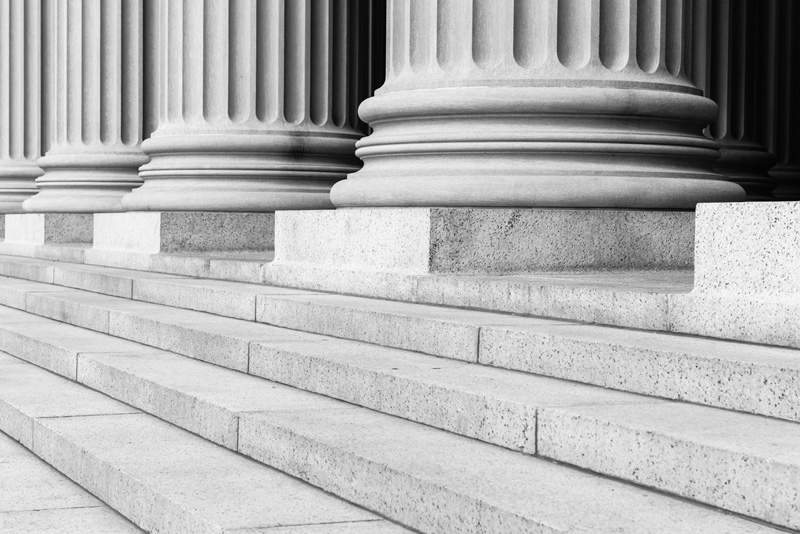 How do law students access candid information about judges as managers and clerkship work environments?
How do law students access candid information about judges as managers and clerkship work environments?
Historically, they didn’t.
Thousands of eager future lawyers head (or head back) to law school this month. Once on campus, they will bombarded by career services and faculty with messaging about judicial clerkships.
It’s the best career decision you can make.
It’s the ultimate “gold star.”
It’s a necessary checkbox for prestigious jobs in private practice, public service, legal academia — and even a future judgeship.
You’ll develop a lifelong mentor/mentee relationship with “your judge.”
At some schools, the messaging is more nefarious. A clerk-at-all-costs mindset. Signaling that any clerkship is better than no clerkship at all, since the position allegedly guarantees professional success. And many schools still advise students they should not accept a clerkship interview unless they’re prepared to accept the clerkship on the spot. And that students should never turn down a clerkship offer.
In light of this overwhelming pressure to clerk, you’d think schools would offer as much information about these prestigious positions as possible, right?
Nope.
There is an information deficit — at some schools, a total information blackout — about judges’ managerial styles, chambers culture, work environments, and expectations for the role. And more often than not, that’s by design.
I’ve spoken with countless law students, law school career services professionals and faculty, and law clerks about schools’ clerkship resources. The landscape is bleak — lacking in transparency, accountability, and candor. No one, before The Legal Accountability Project, dared point out that law schools were part of the problem (and part of the solution), let alone propose and build a solution.
A handful of top schools maintain internal clerkships databases containing reviews by alumni, for students. These are often separated into two categories: post-interview surveys (current students’ impressions from the interview and advice for applicants, before working for the judge) and post-clerkship surveys (evaluations by clerks who spent a year or two in chambers). Even in the best circumstances, each school’s information is restricted to which judges alumni have clerked for before, and their willingness to share information with the school.
And this is not the best of circumstances.
Schools’ post-clerkship surveys are almost universally positive, rendering them basically useless to applicants hoping to avoid abusive judges and bad bosses. When there are no negative reviews, can applicants trust any of the reviews? In what work environment do 100% of employees have positive experiences? None.
This one-sidedness is because clerks receive messaging — either overt or insidious — beginning 1L Fall that judges deserve unquestioning deference.
You should never say anything negative, or even lukewarm, about a judge — certainly not in writing — since you risk reputational harm or retaliation.
If your experience was negative, you are partly to blame.
So, mistreated clerks did not share this in surveys, part of an industry-wide self-preservation tactic.
Law schools also advise students to “do their research” about judges and clerkship experiences by reaching out to former clerks. But how do students connect with clerks? And are clerks truthful?
Only a handful of schools make historical lists of clerk alumni accessible to students. Some insist on gatekeeping this information by making introductions themselves, and only once students have secured interviews.
Students can reach out cold on LinkedIn. But this is inefficient at best; ineffective at worst.
Many clerks do not list the judges they clerked for on LinkedIn — just the court. Even if you track down former clerks — not a sure bet — consider the type of clerk willing to speak with you: overwhelmingly those whose experiences were positive.
Mistreated clerks tell me they are not always honest with students who reach out. Even in this private setting, they whitewash the experience, fearing reputational harm or retaliation for speaking ill of their powerful bosses.
Some are retraumatized by the outreach. Others do not respond at all.
Some students schedule as many as five to ten 30-minute calls in advance of applying. But considering these logistical challenges, many applicants “apply blind” and indiscriminately to as many as 50 or 100 judges on OSCAR (the Online System for Clerkship Application and Review) in June and only reach out to clerks once they have secured interviews.
But judges give interviewees as little as 48 hours’ notice, causing applicants to scramble to connect with clerks. Often, they cannot.
So, when schools advise students not to go on interviews unless they are prepared to accept a position if offered, and not to turn down an offer, students are put in a challenging position.
The status quo hurts judges, too. Many federal judges receive hundreds of applications for each position. Students do not have enough information to apply to particular judges who they actually want to work for. So, judges extend interviews based on applicants’ credentials rather than to those with a sincere interest, or understanding of the work environment and expectations.
Considering the intimate nature of the role, the small and isolated chambers environment, and judges’ emphasis on “fit” in hiring, a system that ensures better matching between judges and clerks is necessary.
In April 2024, LAP upended the clerkship system, launching our Centralized Clerkships Database, an innovative, common-sense legal technology and transparency platform. Compared to “Glassdoor for Judges,” LAP’s database empowers clerks to review their powerful bosses in a verified, anonymous platform accessible only to students and recent graduates applying for clerkships.
LAP’s database already contains more than 1,300 candid reviews about more than 900 federal and state judges and is the largest independent repository of clerkship information in the U.S. — nearly twice the size of most top schools’ internal databases. And LAP built our growing platform in a year, whereas schools have had years — decades — to struggle to amass information.
Already, more than 1,000 users from nearly every U.S. law school have benefited from the platform, which democratizes clerkships and ensures information is not siloed off at a handful of well-resourced schools and selectively shared with applicants.
LAP is a student- and clerk-centric movement, so the survey and user interface are informed by what students want to know before clerking, and what clerks wish they’d known before clerking. LAP facilitates a seamless clerkship search, empowering applicants to search for judges not just by name, state, and court (as law schools do), but also by judge’s gender, race, law school, and appointing president or governor.
And, LAP doesn’t hide the ball: clerks rate judges as managers and overall clerkship experiences — positive, neutral, or negative. While we encourage applicants to read as many reviews as possible, they should be able to filter based on past clerks’ experiences.
LAP also empowers diverse students, who are underrepresented among clerks and may be particularly interested in working for judges who are sensitive to diverse identities and hire diverse clerks — to pursue these positions with confidence. Clerkships are overwhelmingly white and male (79% of federal clerks and 72% of state clerks). Diversifying clerkships — and, in turn, the upper echelons of the legal profession, considering the emphasis placed on hiring former clerks — necessitates empowering diverse applicants through transparent information-sharing.
LAP’s database is better than anything law schools have — or can do. A national database compiling information from clerks nationwide amasses exponentially more information than schools can. To be clear: no school knows about all the judges students will apply to, especially since new judges are appointed and elected each year, and law schools facilitate pipelines to certain judges. There are gaps in every school’s information: LAP fills them.
Beyond that, schools lack a diversity of clerkship experiences. Most clerks are white and male. Yet a nonwhite, female, or LGBTQ+ clerk’s experience with the same judge will be different. Schools’ information is not sensitive to these constraints.
Most importantly, LAP’s database is the only source of candid information, particularly about judges to avoid. Some judges are good bosses for some and not for others. Some judges are not good bosses for anyone. Never before has there been a way to easily access this information, causing too many clerks, year after year, to unwittingly enter hostile work environments.
I was one of those clerks. Correcting this injustice is personal to me.
Law schools have been unable, or unwilling, to collect and share negative information about judges with students. Some are uneasy about maintaining negative reviews in writing. Others prioritize their relationships with judges — even those who mistreat clerks — over their duty of care to students. Still others, through their messaging, signal they do not want negative information.
LAP has something law schools do not: honest reviews about judges.
If you’re a student or recent graduate with access to your school’s database and to LAP’s, do a side-by-side comparison. Here’s what you’ll find: for dozens of judges where LAP has negative reviews, law school databases either have no information at all or, even more troublingly, positive reviews.
Simply put, if a student were to, as schools instruct, “do their research” solely in the school’s internal database, they would be unwittingly misled into unsafe work environments with dozens of problematic judges. Whether it’s willful ignorance, negligence, or intentional information withholding, schools should be held accountable, especially as some continue to signal to students that subscribing to LAP’s database is unnecessary because they have “robust” internal databases.
No school’s database provides a candid, accurate picture of judicial work environments. Meaning no student is adequately informed by their law school.
Fortunately, LAP offers schools a solution. All they must do is subscribe, for just $5 per student per year. A drop in the bucket for well-resourced schools.
This year, students and recent graduates sought out this information and paid to access it individually. Some top law reviews subscribed on behalf of their editorial boards at the reduced law school rate.
But it’s fairer and more equitable for schools to subscribe, to ensure cost is not a barrier for students — particularly for those who enter law school at a disadvantage, and who are less likely to know about clerking. Students pay hefty tuition: this is a necessary resource for clerkship advising.
There’s also a moral imperative. Law schools have historically contributed to the problem — sending students into unsafe work environments, messaging that “challenging” clerkships (a euphemism for mistreatment) were “worth it” for the prestige; emphasizing prestige of position over quality of work experience; and then benefiting, through public perception of the school and rankings, off the number of clerkship placements. Schools should be the first to step forward and make changes. Some may not want to hear this, but schools’ opposition, in the face of overwhelming evidence of the urgency of sweeping reform, signals a disregard for student and alumni well-being.
Of the institutional stakeholders who benefit from the clerkship system, I expected law schools would be easier partners that the federal judiciary, though both are notoriously slow to change. Yet ironically, some judges have moved faster than schools, circulating LAP’s post-clerkship survey to clerks and encouraging them to share their experiences. There is no reason for schools to fear angering judges by subscribing to LAP’s database, when most judges are not angry.
Mainstreaming this database and ensuring students are properly informed is urgent. As former Alaska federal judge Joshua Kindred’s resignation underscores, sexual harassment and appalling abuse continue to occur in judicial chambers. Nor is this behavior always an “open secret” whereby some students gain information through the “clerkships whisper network.”
During Kindred’s five years on the bench, he hired clerks from a handful of schools. Whether applicants can access any information about judges at all should not be as random as whether they hired from their school in the past.
And considering the lack of antidiscrimination protections for federal clerks, and the enormous power and influence judges exert over clerks’ careers, it is particularly important that applicants avoid abusive judges.
Perhaps some believe they cannot afford to be selective about who they clerk for, due to their class rank or law school rank. Or, they think any clerkship is better than no clerkship at all.
In fact, I routinely hear from mistreated clerks who say no clerkship would have been better than the abuse they endured, considering the mental health, reputational, and career damage they experienced.
Sadly, some students learn about judges’ bad reputations through the grapevine and decide they “can handle it.” But no one should have to. And actually, you probably cannot handle it. Seeing negative reviews in writing properly warns applicants.
This attitude also precludes reform. As long as some are willing to endure abuse, and the clerkship system shields this information, abusive judges will not be incentivized to change their behavior, nor will the judiciary be incentivized to discipline them.
LAP has spearheaded a nationwide reshuffling of clerks. Judges with positive reviews get more, better applicants. Those whose reviews are negative may get fewer. This has already incentivized some to change their behavior. And for the first time, clerks are truly empowered to be informed and discerning consumers of clerkship opportunities.
For decades, institutional stakeholders acted as if there were no solutions to the broken clerkship system. LAP’s database is the solution. It’s the most radical reform in a generation and has already sparked meaningful change in the courts.
Law schools may not want to be first movers. Nor should they be last movers. The database is here. It’s happening — with or without schools. The only question is whether law schools will decide to benefit from the change LAP created.
Aliza Shatzman is the President and Founder of The Legal Accountability Project, a nonprofit aimed at ensuring that law clerks have positive clerkship experiences, while extending support and resources to those who do not. She regularly writes and speaks about judicial accountability and clerkships. Reach out to her via email at [email protected] and follow her on Twitter @AlizaShatzman.
#Law #Schools #Part #Problem #Solution #Broken #Clerkship #System










